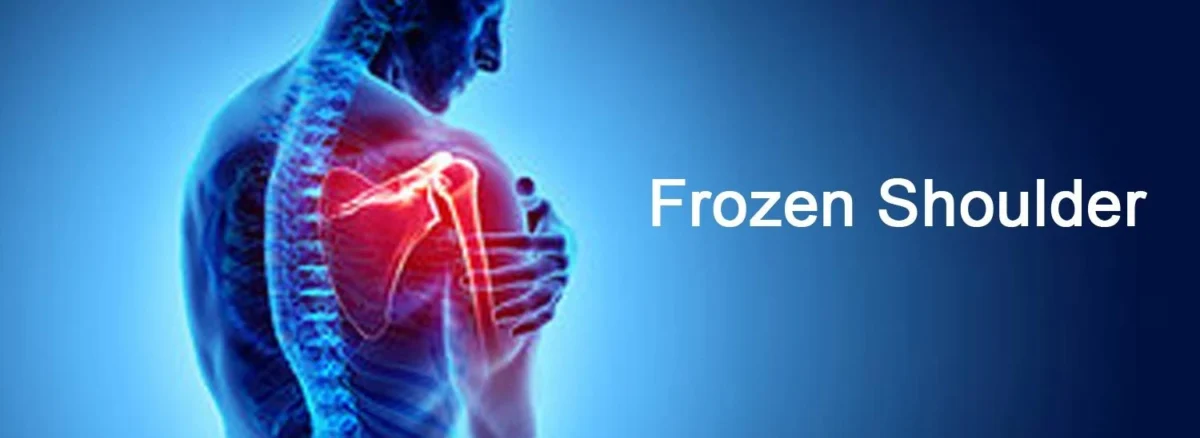Adhesive capsulitis, or frozen shoulder, is a condition that causes pain, stiffness, and a loss of regular range of motion in the shoulder. The disorder usually affects one side and can be unpleasant for sufferers because of the persistent pain, limited shoulder movement (leading to reduced arm use), and long healing time.
The condition is fairly common among the general population. People in their 50s and 60s are more likely to develop this condition, and people under the age of 40 are rarely affected. Women are more likely than men to be affected by frozen shoulder.
Frozen shoulder normally affects only one shoulder (left or right) and improves on its own, but it can continue for up to years. People who have frozen shoulder on one side may develop it on the other as well. Therefore, today, I will tell you about the methods to prevent and treat frozen shoulder.
The Main Causes Of Frozen Shoulder
The Frozen shoulder is most commonly caused by a shoulder injury, such as, a shoulder bone fracture, a rotator cuff tear, or shoulder surgery. It can also occur after a person has undergone other types of surgery, such as a heart or brain operation.
Frozen shoulder can appear without any prior injury and is more common in those who have specific disorders or conditions. People who have diabetes, for example, are more likely to suffer from frozen shoulder. In fact, between 10% and 20% of people with diabetes acquire the disease. Frozen shoulder appears to be more common in the following groups:
- Those with thyroid disorders, a gland in the neck that releases hormones that control the body’s use and storage of energy
- People suffering from diabetes mellitus
- People who have been immobilised for long periods of time.
- Those who have taken antiretroviral medications (especially protease inhibitors) to treat HIV infection
- People with Parkinson’s disease
- People who have suffered a stroke
The exact cause of frozen shoulder is unknown, but it is thought to develop when the joint becomes inflamed and scar tissue forms. The tissues inside the joint shrink and harden as a result, making the shoulder more difficult to move.
How To Prevent Frozen Shoulder?
Frozen shoulder syndrome is a condition with a long and arduous recovery period, so it is important to take steps as much as possible to prevent it from occurring. There are a few simple things you can do to prevent it:
- Keep a healthy immune system.
- Stretch your shoulder and back muscles on a daily basis.
- If you have diabetes, you must keep a close eye on it.
- Rotate your hands and palms to stretch different tendons.
- Good ergonomics should be practised while sitting at a desk and using a computer.
- After an injury or surgery, performing range-of-motion exercises as soon as possible.
Methods To Treat Frozen Shoulder
The majority of frozen shoulder treatments focus on reducing shoulder pain while retaining as much range of motion as feasible.
Medications
Aspirin and ibuprofen (Advil, Motrin IB, and others) are over-the-counter pain medications that can help with the pain and inflammation associated with frozen shoulder. Your doctor may prescribe stronger pain relievers and anti-inflammatory medicines in some circumstances.
Therapy
To regain as much shoulder mobility as possible, a physical therapist can teach you range-of-motion exercises. Maintaining your commitment to these exercises will help you recover your mobility.
Surgical and Other Procedures
Frozen shoulders usually resolve on their own within 12 to 18 months. If you have chronic symptoms, your doctor may advise:
Steroid injections
Injecting corticosteroids into your shoulder joint, especially early on in the procedure, may help reduce discomfort and increase shoulder mobility.
Joint distension
Injecting sterile water into the joint capsule can help expand the tissue and make movement easier.
Shoulder manipulation.
In this procedure, you are given a general anaesthetic, which causes you to be unconscious and pain-free. The doctor will then manipulate your shoulder joint in various directions in order to loosen the tightened tissue.
Surgery.
Surgery to remove scar tissue and adhesions from inside your shoulder joint is rare for frozen shoulder, but if nothing else has helped, your doctor may prescribe it. This surgery is performed with lighted, tubular instruments inserted through small incisions around your joint by your doctor (arthroscopically).


